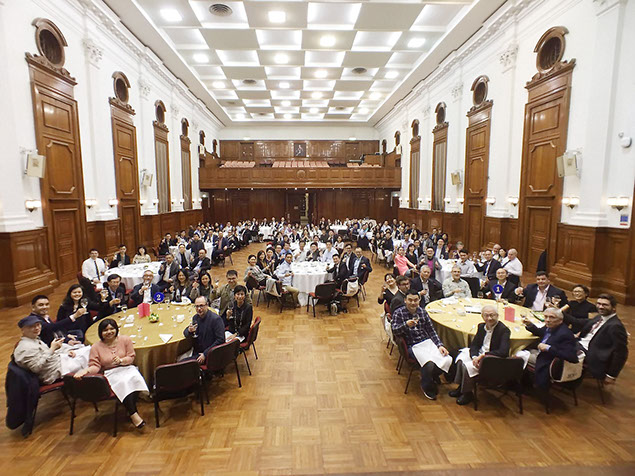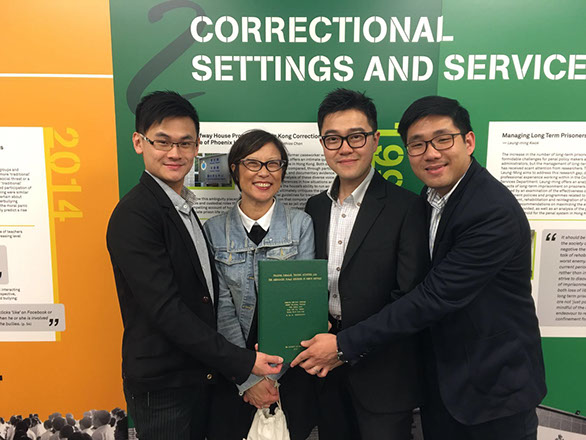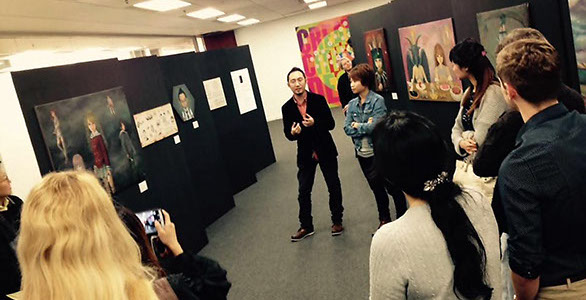What do cigarette smugglers of the 1990s have in common with the parallel traders of today? A whole lot, says Professor Karen Joe Laidler, who has co-authored a paper on insights gleaned over 30 years from dissertations by students of the Master of Social Sciences in Criminology – students who have come from legal and law enforcement backgrounds and had access to data that is out of reach of ordinary researchers.
The output of these students reveals the trends of crime in Hong Kong where, unsurprisingly, economic crime has predominated, including the cigarette smuggling explored in a paper by
Ho Shi-king in 1994.
Cigarette smuggling had begun to boom in the early 1990s when the Government increased the retail tax by 50 per cent. Cigarettes were sent across the border as exports – which were not taxed – then smuggled back to sell at half the market price or less. The public expressed little concern about this activity, instead focussing complaints on the smuggling of luxury goods aboard tai fei (speedboats).
Fast forward to the present day where cigarette smuggling continues – 1.4 million cigarette sticks seized at the border on just one day in July 2016 with a market value of about HK$3.8 million and duty potential of about HK$2.6 million – and so does public unconcern about this activity. Instead, protests focus on parallel traders who take Hong Kong-sourced goods across the border in suitcases and trolleys.
“With cases like this, we’re able to showcase the development of the criminology field as it relates to our students who have been practitioners,” Professor Laidler said. “The patterns of smuggling and the associated response in the past are an important context for understanding cross-border smuggling of everyday commodities today.”

![]() These are more than dissertations,
These are more than dissertations,
they illustrate the role this kind of work
can play in documenting history and
helping to explain why things are the way
they are today. ![]()
Professor Karen Joe Laidler
‘Cultural flavour’
The insights from the dissertations also extend across a range of other issues relating to crime and law enforcement in Hong Kong – from juvenile delinquency, gender and the cultural landscape behind crime to correctional services and police and policing. More importantly, they highlight the particular nature of Hong Kong crime, and at particular times in the city’s history. “The crimes themselves that the students write about are not unique, it’s the way they are done that gives them a kind of cultural flavour,” she said.
Apart from cigarette smuggling, the students report on such phenomena as the infiltration of triads into the interior decorating business in the late 1990s, counterfeit credit cards (Hong Kong and Malaysia accounted for nearly one-third of counterfeit losses globally from 1989 to 1991), the outcomes of imposing British and Western correctional methods in an Asian society, and police sub-culture, which is characterised by such things as regular curry lunches to establish bonds and communication channels and the fact that triads and police worship the same god, Kwan Ti.
Professor Laidler’s retrospective of the students’ work was co-authored with her colleague in the Department of Sociology Professor Maggy Lee, and published in a special edition of the Hong Kong Sociological Association Journal as part of the Criminology programme’s 30th anniversary celebrations (see panel).
“This remains the only taught postgraduate programme on criminology in Hong Kong. These are more than dissertations, they illustrate the role this kind of work can play in documenting history and helping to explain why things are the way they are today,” Professor Laidler said.
A gruesome gallery
Anniversary commemorations for the Master of Social Sciences in Criminology had the usual and the unusual – including a gruesome art show on the theme of famous Hong Kong crimes.
The usual included an exhibition, HKU Criminology Through the Years, that was held on campus in April and consisted of informative panels about the interesting findings from student dissertations, research by HKU academic staff, and related artwork.
There were also film screenings in March, organised with Anti-480 – Anti Sexual Violence Resource Centre, an alumni reunion attended by 150 people, and a symposium on the development of the criminology field in Hong Kong.
Out of the ordinary, though, was the Victoria Crime art exhibition co-presented with Artify Gallery. The exhibition had been pulled together for an earlier show and was re-mounted specially for the Master of Social Sciences in Criminology anniversary in March. Artists used paintings, 3D models, photographs and comic strips to give vivid interpretations of four notorious Hong Kong crimes: the ‘jars’ murder, Hello Kitty murder, strawberry milkshake murder and the parent killer case. Horrific but fascinating, the artworks and other events illustrated the darker side of Hong Kong life and the efforts to contain it.
Professor Karen Joe Laidler (second from left) and alumni of 2015, celebrating the journal publication of findings from their dissertation group project on parallel trading and policing.
Artist Dragon Ken, Tang Tsz-kin at the Victoria Crime exhibition co-presented by the Department of Sociology and Artify Gallery.
Historical documents on the founding of the Master of Social Sciences in Criminology programme.
Next

Criminal Passions
Hong Kong’s only postgraduate programme in criminology – whose alumni include senior police and customs officers and judges – celebrated its 30th anniversary this year with retrospectives of the trends and peculiarities of Hong Kong crime.


An alumni reunion dinner in celebration of the 30th anniversary of HKU’s Master of Social Sciences in
Criminology.



